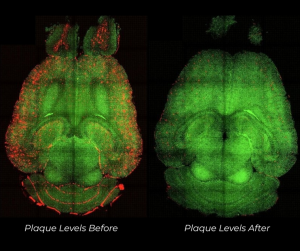Alzheimer’s was reversed in Mice: This could mean Hope for the Human Race?
In a quiet lab humming with machines and possibility, a team of scientists may have just nudged open one of medicine’s most stubborn doors, the mystery of Alzheimer’s disease. Using a microscopic tool born from nanotechnology, they’ve managed to reverse Alzheimer’s-like symptoms in mice, a result that has electrified the neuroscience community and stirred cautious hope among millions of families worldwide.

The study, published in Signal Transduction and Targeted Therapy, focuses not on neurons of the brain’s overworked messengers, but on the brain’s waste management system, the blood-brain barrier. This protective shield, often compared to a high-security gatekeeper, regulates what enters and exits the brain. In Alzheimer’s, that barrier falters. Toxic proteins such as amyloid-beta begin to pile up, suffocating neurons and eroding memory.
The researchers’ innovation? Nanoparticles engineered to mimic a natural brain protein called LRP1, which normally helps sweep away toxins. By restoring this gatekeeper’s vigilance, the team effectively reopened the brain’s clogged cleanup channels.
Over six months, genetically engineered mice with Alzheimer’s-like symptoms received just three injections of the treatment. To the scientists’ astonishment, the animals did not only stabilized, they began to behave like healthy mice again. One mouse, equivalent in age to a 60-year-old human, displayed signs of mental rejuvenation comparable to a person regaining youthful clarity. “It’s as though we jump-started the brain’s own repair shop. We didn’t just stop the disease, we reversed it”, one of the lead authors in the paper said.
As a glimmer of hope for families grappling with Alzheimer’s, where the line between recognition and loss blurs daily, such breakthroughs land like a flash of light in a long tunnel. In living rooms across the world, caregivers are already sharing the study on social media, attaching captions like “Maybe in our lifetime.”
Yet the scientists behind the discovery are urging restraint. “We’re still at the very beginning,” they warn. Mice, after all, are not humans. The leap from the lab to the clinic is perilous and often littered with setbacks. The brain’s complexity, coupled with the unpredictability of nanotechnology in human systems, demands years of testing and regulatory scrutiny.
Still, optimism lingers. The approach represents a shift in Alzheimer’s research, moving away from decades of disappointing drug trials that targeted symptoms rather than underlying causes. This method of repairing the brain’s self-cleaning system, which could mark a new frontier.
Behind every scientific milestone lies a web of funding, policy and urgency. Governments and pharmaceutical companies have poured billions into Alzheimer’s research, yet few treatments have emerged that meaningfully halt the disease. As the global population ages, with Alzheimer’s projected to affect more than 130 million people by 2050, the search for a breakthrough has become as much a political and economic priority as a medical one.
If this nanotech therapy proves viable in humans, it could reshape not only healthcare but family life, workforce planning and elder care systems. “Reversing cognitive decline is a social revolution, not just a medical miracle. Imagine what it would mean for families, for memory, for dignity” – said a health policy analyst reacting to the study.
In the meantime, the scientists return to their mice and microscopes, pushing cautiously forward. Clinical trials on humans remain years away, but the symbolism of this step, is way forward in restoring clarity to a murky disease that resonates far beyond the lab.
Alzheimer’s has long been a thief of time, memory and connection. But in one corner of medical science, tiny particles are starting to rewrite that story by one neuron and one glimmer of hope, at a time.








